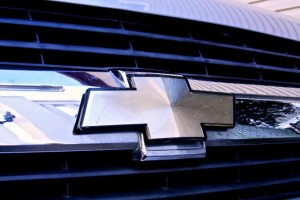
The Big Three auto giants exceeded sales forecasts last month, posting their highest gains in four years.
Chrysler left economists’ predictions in the dust by reporting a 40 percent increase in sales for February compared to a year earlier. GM and Ford also motored ahead with growth figures that beat expectations. Total vehicle sales hit an annualized rate of more than 15 million, surpassing a Bloomberg estimate by nearly one million.
The automotive boon comes amid rising gasoline prices that have many paying nearly $4 per gallon at the pump. But the rising price of energy forced Americans to rethink their mileage, not their habits. Consumer demand is strong; and as consumer confidence—a measure of how optimistic buyers are about the economy—continues growing, demand for autos will grow.
“The biggest indicator of increased consumer confidence is that jobless claims are down,” said Societe Generale Director and Senior Economist Brian Jones. Claims for jobless benefits are now at a four-year low and “as long as the labor market continues to improve,” auto makers will continue to see improved sales.
Old age and the weather have ripened the market for Americans to trade in their jalopies for newer cars. And when faced with a snowless winter, smaller, sportier cars are now more attractive.
Americans’ cars are now older than the average sixth grader. This pent-up demand is driving sales. Sensing an economic upswing, people are less scared to make big purchases they have previously held out on.
The dry winter months, some economists said, also infected buyers with an early case of spring fever. Consumers rewarded themselves with new rides sooner, possibly artificially boosting sales now that would have taken place later in the season. But Jones believes demand is strengthening, and as consumer confidence grows, there will not be a fallout in summer sales.
“If fuel prices continue to go up, it will push people to buy new cars. People cannot change their commuting patterns very easily.” For that to happen, prices “need to go to a place that is painful and is going to stick,” said Dr. Robert Brusca, president of Fact and Opinion Economics. “It’s not the first run up in prices that change people’s minds. It’s the second and the third.”
Some consumers made up for this run in February by substituting their cars for ones with more efficient fuel economy, effectively reducing the price of driving. Others shrugged off the price hikes. Sport utility vehicle sales remained robust in the face of the highest gasoline prices in nearly four years. Another run up in prices, however, may reach a tipping point, and a decline in sales will ensue.
Surprisingly light trucks did well last month, but for the American auto industry, making fuel efficiency paramount has paid off. Toyota and Honda no longer rule the frugal fuel market.
The Ford Focus, which gets a combined 31 miles per gallon, comprised almost half of Ford’s sales growth in February and provides an alternative to the Toyota Prius.
Car companies offered more efficient alternatives to an eager buyer with an expanding preference basket. Fuel prices have caused people to buy more efficient cars, said Brusca. Consumer confidence, unemployment and spending are still not where they need to be but they’re getting better he said.
“It’s like when a dam breaks,” said Bob Brusca, who is known for cutting through the esoteric fat of economic jargon with colorful metaphors. Consumer confidence is increasing. “We know the water’s rising. The economy is turning, but no one knows when it’s going to happen.” Brusca mentioned no one indicator alone paints a faithful economic portrait, but “it’s reassuring because manufacturing is spotty.”
Contact Dennis O’Reilly at doreill@journalism.cuny.edu